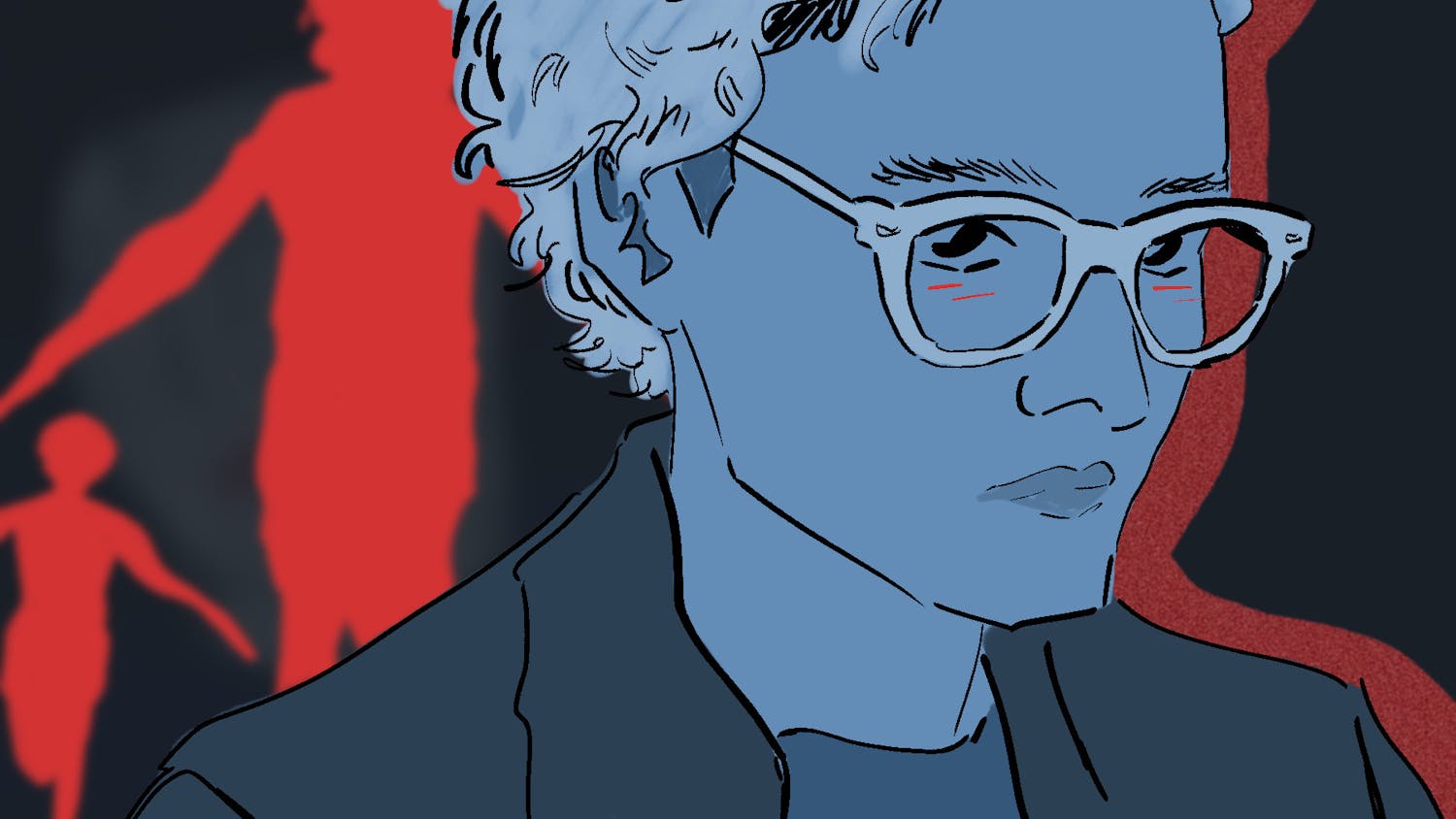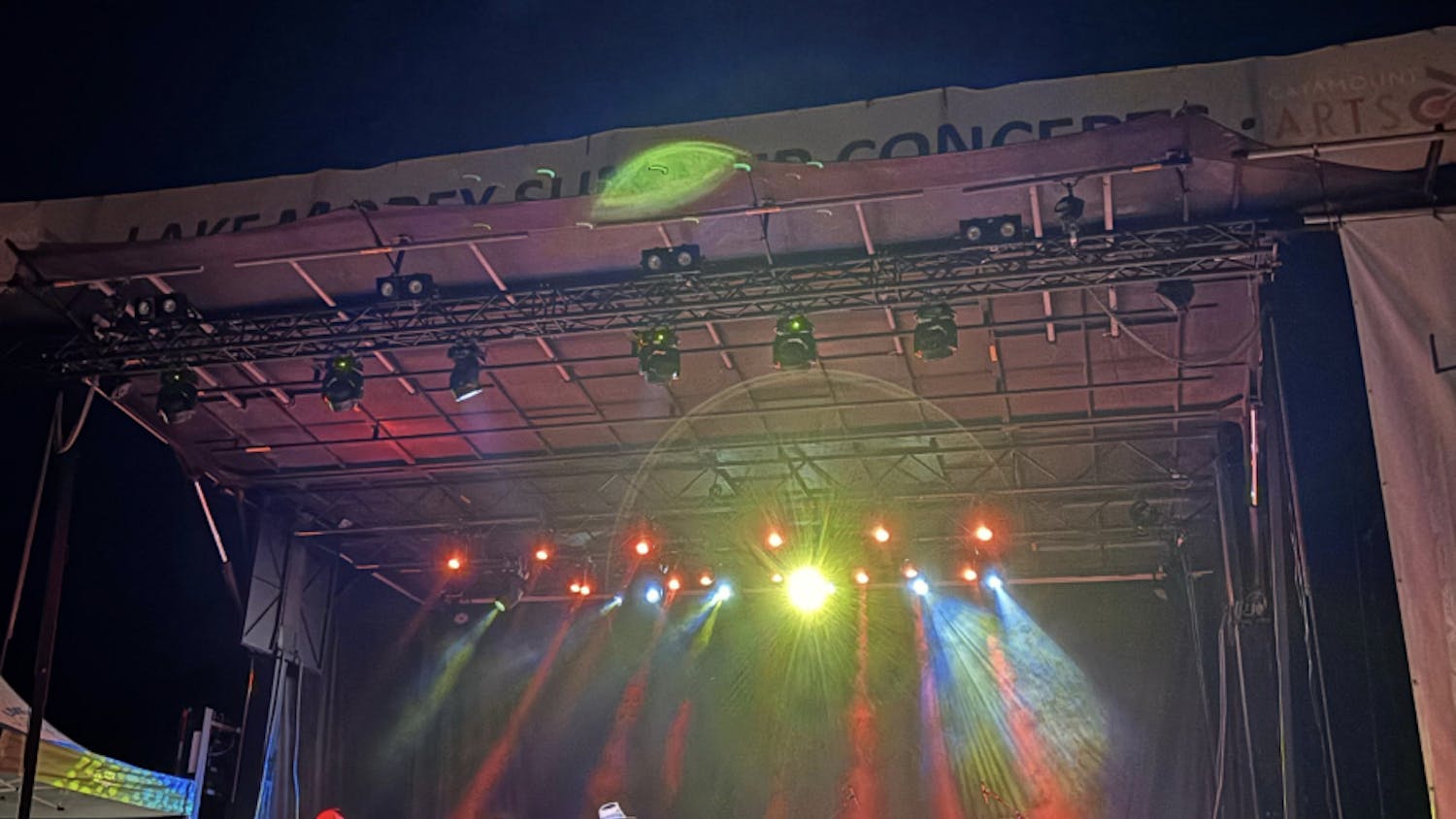The exhibit is representative of the depth of the museum's collection and the devotion to the arts at Dartmouth -- four of the exhibit's featured artists are past artists-in-residence at the College. "Ruscha and Pop" seeks to answer the question posed by Kristin Garcia, Hood Museum assistant curator of academic and student programming, who is also responsible for organizing the display: "When does high art become an everyday object?"
Ed Ruscha's "Standard Station, Amarillo, Texas" (1963) commands attention. Expansive and arresting, Ruscha's primary-colored piece embodies modernity with its streamlined, geometric composition and careful attention to detail -- each nozzle of the gas pump is precisely placed, each windowpane of the gas station is perfectly proportioned -- it is the architecture of Howard Roark looking back from the canvas. Surrounding Ruscha's massive landscape of the ubiquitous American gas station are still-life photographs by George Tice and William Christenberry that create a triptych of America's changing scenery and the idealization that exists behind Route 66 -- further fueling the fantasy of the open highway.
To the left of the highway is a celebration of the mundane, another tenent of Pop Art. Arman -- a one-named wonder a la Madonna -- is best known for his depictions of the dismemberment of various musical instruments, but here a red-ink lithograph outlines a pair of scissors in different positions, creating a striking image that revels in the banality of ordinary things.
Across the way, staring brazenly back at you is Mel Ramos's own version of the reclining nude, a piece that he designed as a modern adaptation of Edouard Manet's originally controversial piece, "Olympia" (1886). Next to "Manet's Olympia" (1974) hangs Ronald Kitay's depiction of a sailor with tattoos that echos a painting by Matisse. These works represent the blurring of high and low culture and the light-hearted irreverence inherent to the Pop Art movement. This capricious spirit is most evident in Ramos's response to why he included a spider monkey in his adaptation of "Olympia," instead of painting the cat pictured in the original Manet.
"[I am] very good at spider monkeys and Manet was very bad at cats."
The last wall of the exhibit is a montage of text and media, some silk-screened images, some collaged and some painstakingly crafted by precise Benday dots. The pictures reflect the overwhelming inundation of our culture, the continual bombardment and desensitization of a generation.
In the Hood's Pop Art exhibit there exists an apparent disjointedness, an incongruity--a sense that you have entered a room where nothing is real, except the way you are made to feel. Whether high art or object, there's no clear cut answer, just like there's no one color unique to Warhol's Chairman Mao. But that's Pop Art. We are never sure what ideal will be shattered next or, as the eye traverses from a Benday dot cathedral to a bikini tan-line prostitute posing as a muse, what belief will be marketed.




